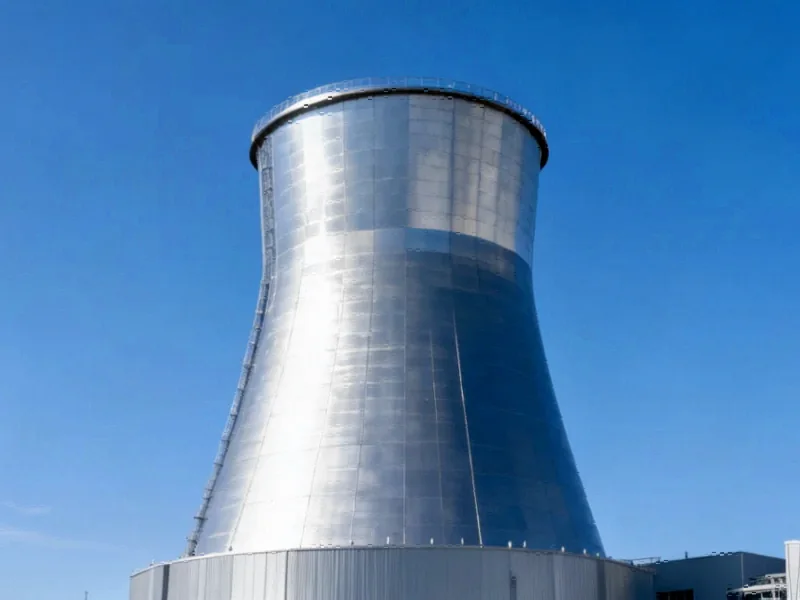From Fossil Fuel Dependence to Clean Energy Leadership
Central Europe, a region historically dependent on conventional energy sources, is emerging as an unexpected powerhouse in the global energy transition. Through strategic deployment of solar infrastructure and locally manufactured battery energy storage systems (BESS), countries including Austria, Hungary, Romania, and Poland are dramatically reducing their reliance on fossil fuels while enhancing energy security., according to related news
Table of Contents
The transformation is particularly remarkable given the region’s climate limitations and historical energy dependencies. What makes this shift even more significant for industrial computing and manufacturing sectors is the reliable, cost-effective power supply being created through this clean energy integration., according to industry news
Solar Power Defies Geographic Expectations
Despite not being known for abundant sunshine, Central European nations have achieved solar growth rates that dwarf the broader European average. According to data from energy think tank Ember, cumulative solar generation capacity across Austria, Hungary, Romania, the Czech Republic, and Poland has skyrocketed by 460% since 2019 – from approximately 8 gigawatts to over 45 GW in 2024.
This growth pace is roughly three times faster than Europe’s overall solar capacity expansion of 145% during the same period. The rapid scaling demonstrates how technological advancements and strategic policy decisions can overcome geographic limitations to create sustainable energy ecosystems.
Battery Storage: The Critical Enabler
The solar revolution in Central Europe is being amplified by equally impressive growth in battery energy storage systems. Between 2022 and 2025, BESS capacity within Austria, Hungary, and Romania alone surged by 472%, according to local utility filings.
This storage infrastructure is crucial for maintaining grid stability and ensuring reliable power supply for industrial operations. The ability to store solar energy during peak generation and discharge during high-demand periods creates a more resilient energy infrastructure that supports continuous manufacturing and computing operations.
Country-Specific Transformations
Austria’s Remarkable Turnaround
Previously dependent on Russia for approximately 90% of its gas supplies, Austria has dramatically reduced direct Russian imports since 2022. The country’s electricity generation mix has transformed from 6% solar and 19% fossil fuels in 2022 to approximately 17% solar and just 10% from fossil fuel plants in 2025.
Hungary’s Solar Surge
Hungary presents an even more striking case study, with solar generation climbing from roughly 14% in 2022 to around 33% in 2025, while fossil fuel dependency dropped from 35% to approximately 22%. This shift is particularly notable given Hungary’s continued purchases of Russian oil and gas, demonstrating how electricity generation can be decoupled from broader energy import strategies.
Industrial and Economic Implications
The rapid clean energy transition in Central Europe carries significant implications for industrial operations and economic development:, as related article
- Energy Security: Reduced dependence on imported fossil fuels enhances energy sovereignty and protects against price volatility
- Cost Competitiveness: Lower electricity costs from renewable sources improve manufacturing competitiveness
- Grid Reliability: Advanced battery systems provide backup power and grid stabilization services
- Job Creation: Local manufacturing of solar components and battery systems supports regional employment
Future Projections and Regional Momentum
Project filings across Central Europe indicate that BESS capacity could increase more than tenfold by 2030 as power grids continue expanding both solar generation and storage capabilities. This projected growth suggests the region’s energy transformation is still in its early stages, with substantial additional capacity coming online throughout the decade.
The combination of rapidly expanding solar infrastructure and sophisticated energy storage systems positions Central Europe as a blueprint for other industrial regions seeking to balance economic development with environmental sustainability. The success of these nations demonstrates that geographic limitations need not prevent ambitious clean energy adoption when supported by appropriate technology and policy frameworks.
For industrial computing operations and manufacturing facilities in the region, this energy transition promises more stable power costs, enhanced reliability, and alignment with increasingly stringent environmental regulations – creating a competitive advantage that extends well beyond national borders.
The rapid adoption of solar and storage technologies in Central Europe provides valuable lessons for industrial operations worldwide, demonstrating how strategic energy investments can transform regional economies while building more sustainable industrial ecosystems.
Related Articles You May Find Interesting
- RSM Forges New Alliance Model to Counter Private Equity Pressure in Accounting I
- UK’s Largest Solar Farm Proposal Sparks Rural Development Debate as Planning Inq
- Digital Sovereignty at Stake: How Europe’s Cloud Dependency Became a Strategic V
- Schneider Electric CEO Champions Electrification as Cornerstone of Global Energy
- Generative AI Coding Assistants Set to Reshape Software Development Landscape wi
References
- https://x.com/ReutersOI
- https://www.reutersagency.com/en/licensereuterscontent/?utm_medium=rcom-artic…
This article aggregates information from publicly available sources. All trademarks and copyrights belong to their respective owners.
Note: Featured image is for illustrative purposes only and does not represent any specific product, service, or entity mentioned in this article.



